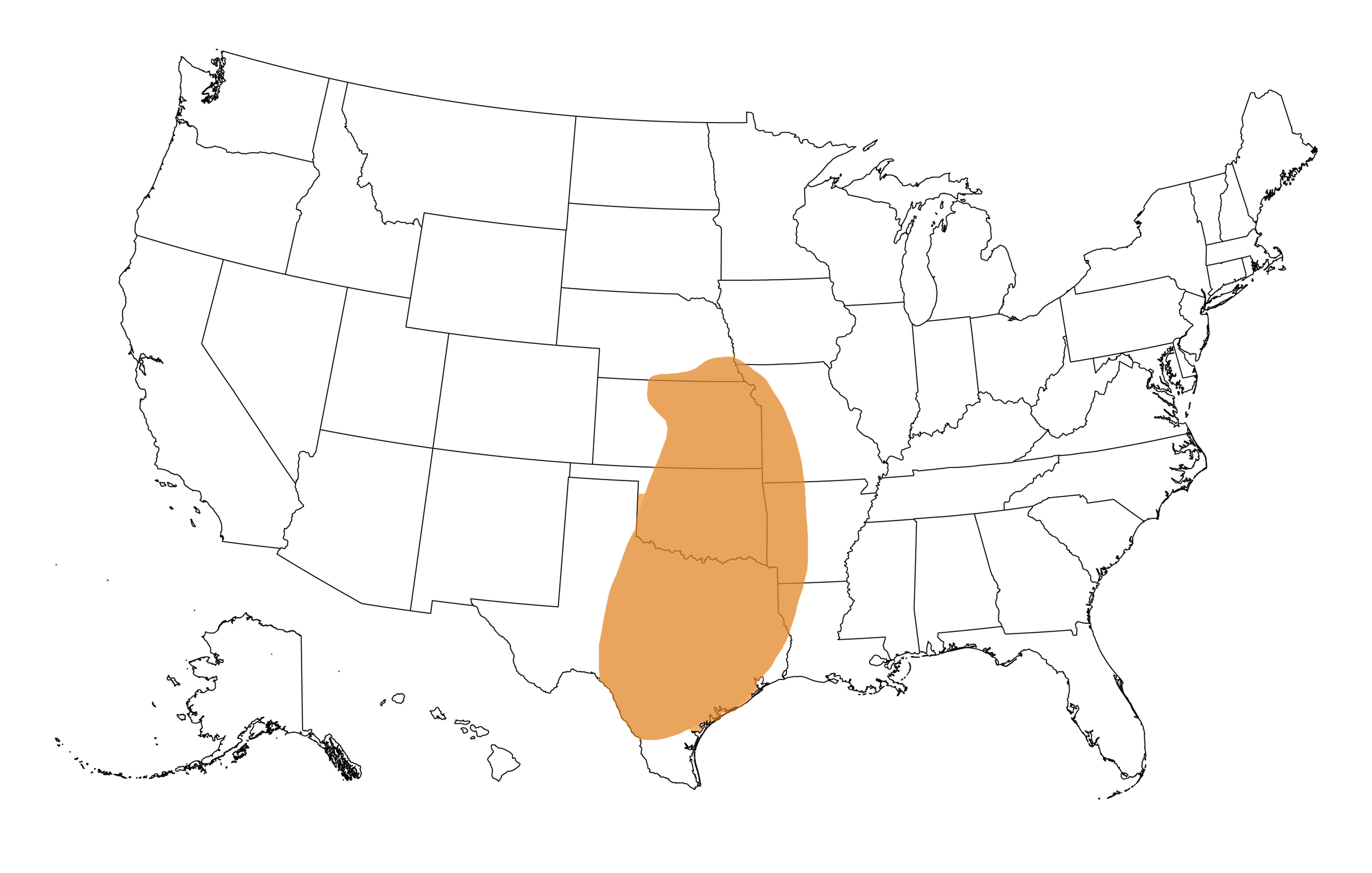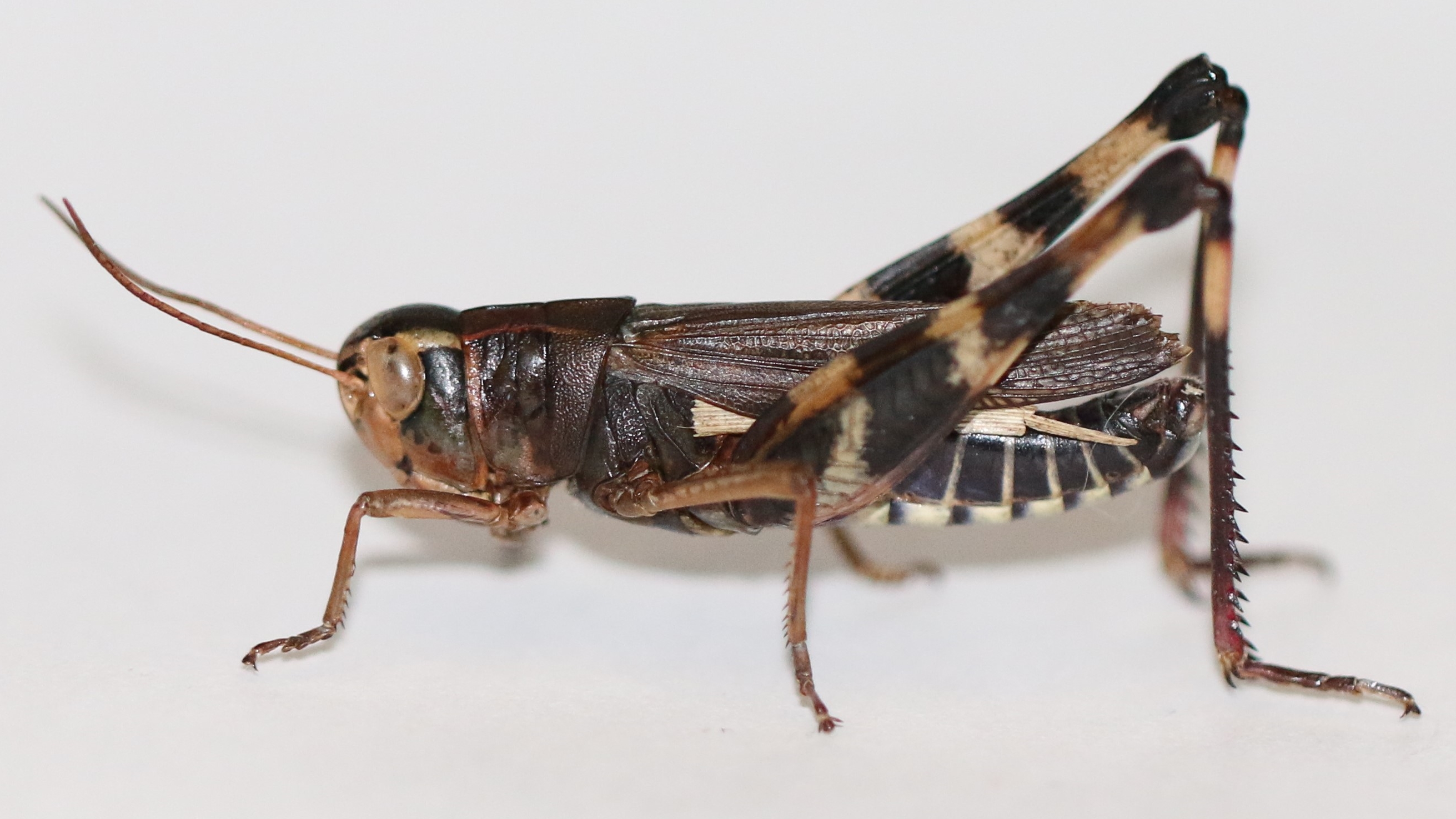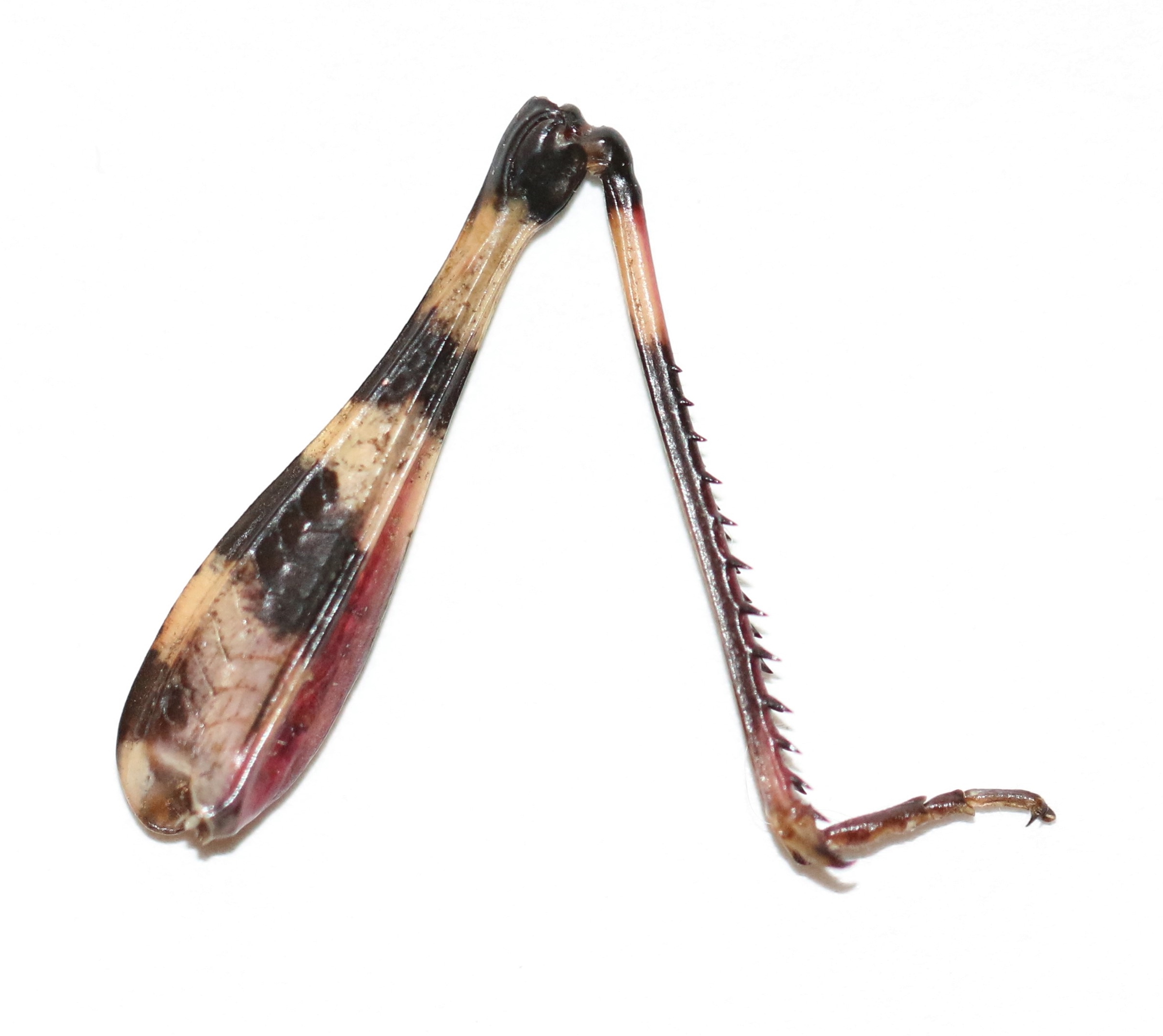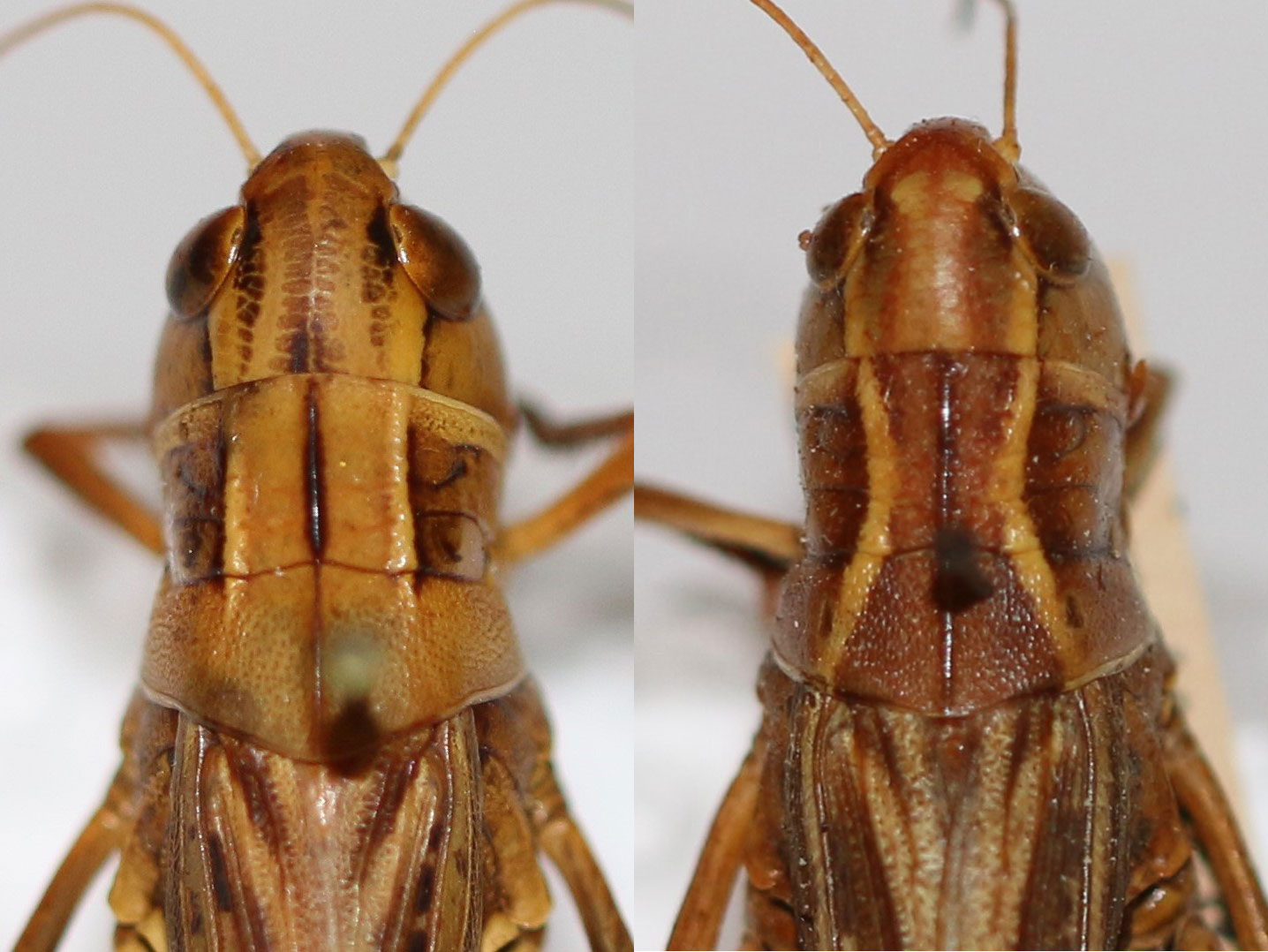Boopedon gracile
|
Geographic range of Boopedon gracile (Rehn) |
|
Fig. 1, prairie boopie adult male |
|
Fig. 2, hind leg of B. gracile with strong barring on the femur |
|
Fig. 3, brown form adult female prairie boopie |
|
Fig. 4, green form adult female prairie boopie |
|
Fig. 5, comparison between the straight light-colored lines of a female prairie boopie (left) and the hourglass-shaped lines of a female ebony grasshopper (right) |
Species
Prairie boopie
Boopedon gracile (Rehn)
Subfamily Gomphocerinae
Identification
As male and female Boopedon look strikingly different, they will be treated separately below:
Male (Fig. 1): A strikingly patterned black and cream grasshopper. Wings usually extend beyond the abdomen, whereas males of most other Boopedon species have wings that are substantially shorter than the abdomen. The most similar species is the ebony grasshopper, Boopedon nubilum, which differs by being entirely black and lacking the barring on the hind femur that is found on prairie boopies (Fig. 2). Prairie boopies also have a cream-colored band at the end of each abdominal segment, resulting in a distinctly striped abdomen. Occasionally males will exhibit dark green in areas of the pronotum that are normally black.
Female: A large, short-winged grasshopper, varying between brown (Fig. 3) and green (Fig. 4) in color with black markings. The pointed wings distinguish it from lubber grasshoppers, while the lack of a throat spur distinguishes it from any similar-looking Melanoplines. While the ebony grasshopper is the most similar species, it lacks strong barring on the hind femur. When viewed from above, both species have a pair light-colored lines extending back from the eyes (Fig. 5). In prairie boopies, these lines stay parallel until they flare outward at the posterior end of the pronotum, while in ebony grasshoppers they are constricted toward the middle of the pronotum, resulting in an hourglass-like shape.
Distribution and habitat
The prairie boopie is found throughout the south-central Great Plains, extending south into Mexico. Its range extends from Texas to the southern edge of eastern Nebraska, extending as far east as the western edges of Louisiana and Arkansas, and as far west as the base of the Oklahoma panhandle and central Kansas. Prairie boopies are typically found in dense grasses, including prairies, rangeland, and savanna habitats. In Oklahoma, this species was reported to be more abundant in overgrazed prairies than natural ones.
Economic importance
Prairie boopies are of little economic importance and is generally categorized as an innocuous species. It is substantially less abundant than ebony grasshoppers and has not been noted to attain pest status.
Food preferences
Exact food preferences are unknown but based on favored habitats and the food preferences of related species, it likely feeds on grasses.
Dispersal and migration
Males are able to fly, while females are flightless.
Hatching
Little is known about the hatching of prairie boopies.
Nymphal development
Little is known about the development of prairie boopies. Nymphs are recorded as early as mid-April in Texas.
Adults and reproduction
In Texas, adults are recorded in late May and remain active through September. Peak activity throughout their range occurs during June and July. Little is known about the reproduction of prairie boopies.
Population ecology
Rarely found in high densities, little is known about the population ecology of the prairie boopie.
Daily activity
Not known for the prairie boopie but documented for the ebony grasshopper.
Source and date
Oklahoma State University, July 2020 by Alexander Harman
Selected references
Brust, Mathew L., W.W. Hoback, and R.J. Wright. 2008. A synopsis of Nebraska grasshopper distributions. Journal of the Kansas Entomological Society. 81 (3): 208–255
Capinera, J.L., R.D. Scott, and T.J. Walker. 2004. Field Guide to Grasshoppers, Katydids, and Crickets of the United States. Cornell University Press.
Coppock, S. Jr. 1962. The grasshoppers of Oklahoma. Ph.D. dissertation, Oklahoma State University, Stillwater.
Dysart, R.J. 1995. Relative importance of rangeland grasshoppers in western North America: a numerical ranking from the literature, pp. VI.6-1 to VI.6-20. In: Integrated Pest Management User Handbook. USDA APHIS Tech. Bull. Washington, D.C
Hill, Jovonn. 2013. Noteworthy collections of grasshoppers (Orthoptera: Acrididae) from five southeastern states. Midsouth Entomologist 6: 115–118.
Smith, C.C. 1940. The effect of overgrazing and erosion upon the biota of the mixed-grass prairie of Oklahoma. Ecology 21 (3): 381–397.
Ranges were described based on the maps found in Capinera et al. (2004) as well as examining more recent data collected by bugguide.net and inaturalist.org.





